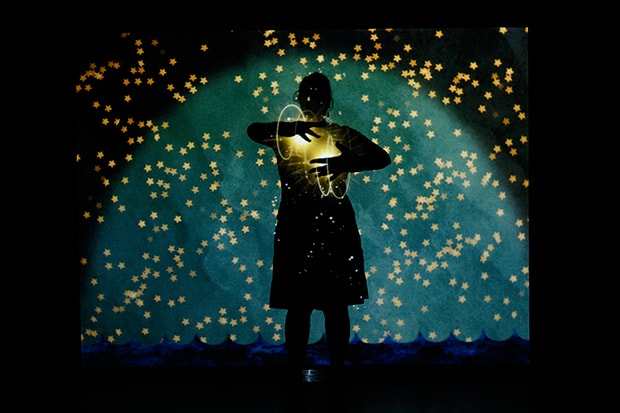
Curatorial practices around film, video, and new media technology carry the potential to repossess and radicalize the heart of cinema. This article posits New Frontier, a program of the Sundance Film Festival, as one manifestation of contemporary feminist curatorial and artist work redefining the terms of our engagement with cinematic technologies and storytelling practices. Senior film programmer and curator Shari Frilot’s strategies for conceptualizing and organizing New Frontier around a notion of “physical cinema” move audiences to recognize, locate, and activate their bodies within a generative dynamic to cinematic production, distribution, and exhibition—facilitating the conditions within which artists, scholars, filmmakers, media scientists, and organizers might forge other ways of loving cinema.
Degenerating Cinema
Susan Sontag’s infamous 1996 New York Times article, “The Decay of Cinema,” is commonly read as an obituary, a proclamation of the death of cinema and cinephilia. Based in the “desire to lose yourself in other people’s lives,” Sontag longs for a cinema culture that delivers “the experience of surrender to, of being transported by, what was on the screen.” She elaborates:
You wanted to be kidnapped by the movie—and to be kidnapped was to be overwhelmed by the physical presence of the image. The experience of “going to the movies” was part of it. … To be kidnapped, you have to be in a movie theater, seated in the dark among anonymous strangers.1
This escapist, immersive approach to cinema was perpetuated through the emergence of film festivals in the United States during the escalating Cold War. Festivals not only conferred glamour and sophistication onto the film experience, but also played a formative role in validating film as an art form.2
What needs to still be explored by scholars is how the development of film culture and the emergence of film festivals were informed by the sociopolitical contexts of the 1950s and 1960s, which marked daily life for communities of color with racial discrimination, violence, and organized resistance as part of civil rights and national liberation struggles.3 This research–and how it entangles with the question of what white, middle-class, movie-going audiences have been escaping–is beyond the scope of this article. Following feminist theories of spectatorship and the gaze, it is important to note how viewing practices structured around willingly losing oneself are predicated upon mustering sufficient identification with the story and characters in order to want to be kidnapped by a film. Rather than suggesting modes of engagement with cinema are simply relative to different audiences or must find universally desiring spectators, I am curious to pursue how cinema’s production, exhibition, distribution, and love are mediated by social, economic, and political systems that sustain structures of violence and oppression against communities of historically disenfranchised and dispossessed people.4
Sontag laments that film practices have disintegrated so completely that any films worthy of love would “have to be actual violations of the norms and practices that now govern movie making everywhere in the capitalist and would-be capitalist world.”5 But in what ways have the economic systems to which Sontag attributes cinema’s decay also underwritten the very terms of the cinephilia and cinema she mourns? Drawing on Marx’s labor theory of value, Jonathan Beller compellingly argues that perception and looking have been made into value-productive labor through the cinematization and industrialization of the visual. Beller positions film as a “social relation that separates the visual component of human subjective activity from the body in its immediate environment” and cinema as “the systemic organization of this productive separation.”6 As a result of capital accumulation, Beller argues, the visual has transformed “from a zone of unalienated creative practice to one of alienated labor.”7 It can be argued that this transformation found its way through the intimate pleasures derived from immersive, escapist modes of engaging cinema—modes initially facilitated through technological advances consolidating cinema into a standardized experience in the early twentieth century, and in the contemporary moment through the accelerated individualization of viewing formats.
Cinema has neither always been a commodity nor has it always run on a seamless narrative designed to lose oneself within. The experience of going to the cinema before the turn of the twentieth century, as film historian Charles Musser recounts, entailed the presentation of short, disparate cinematic sequences shaped into a program by the exhibitor. When film became recognized as a profitable commercial enterprise, the medium of film was consolidated into a linear, narrative structure that could be uniformly experienced. In the early 1910s, this displaced both multiple-reel, short-film exhibition formats and the role of the exhibitor as the cinematic arbiter between the film and the audience.8 Audiences also needed to be consolidated in order for this new model to generate extensive profits. Working-class and immigrant audiences of the nickelodeons were quickly forsaken in order to meet the increasing expenses of extravagant movie palaces that sought programming suitable for the “tender sensibilities” of white, middle-class women.9 The creation of a primarily white, upper-class clientele was further built on racial differences—the absence of black audiences (often explicitly stated in the theaters’ advertising) became a signifier of the exclusive and elite experiences of movie-going.10
The commodification enabled through the advent of narrative, feature-length film exhibition formats was first exemplified in the unprecedented mass circulation of Birth of a Nation. As Cedric Robinson has compellingly argued, Griffith’s film “counterfeited history” to solidify fixed notions of race and white superiority into the fabric of American national identity.11 Birth of a Nation also established financial motivations for the production and distribution of films that valorized whiteness and reinforced oppressive “aesthetic contracts.”12 The film fanned the racial fantasies amongst white-invested audiences, instigating a resurgence of violent movements and organizations. The film has since been canonized as the inaugural marker of American independent film.13
This article explores how a rekindling of the exhibitor’s role might disrupt the commercial misdeeds that have grown out of independent film culture and compel a re-envisioning of our relationship to the moving image and cinema.
- Susan Sontag, “The Decay of Cinema,” New York Times Magazine, 25. Feb. 1996. [↩]
- When the San Francisco International Film Festival was founded in 1958, many critics, among them Pauline Kael, faulted the festival for making cinema secondary to the lavish parties and socialite events. In New York, It wasn’t until the second year after the Lincoln Center for the Performing Arts was founded that film was recognized as a valid art form through the establishment of the New York Film Festival in 1963. For more on how perceptions of film as an art form shifted for a general public in the 1950s and 1960s, see Shyon Baumann, “Intellectualization and Art World Development: Film in the United States,” American Sociological Review 66:3 (2001): 404-426. [↩]
- Kara Keeling’s groundbreaking text The Witch’s Flight: The Cinematic, the Black Femme, and the Image of Common Sense offers a rigorous theoretical foundation for this line of inquiry. (Duke University Press, 2007). [↩]
- Consider Grace Elizabeth Hale’s discussion of “spectacle lynching” and the role of circulating photographs of lynchings in the earlier part of the twentieth century in order to publicly intimidate and perpetuate fear within black communities. See Grace Elizabeth Hale, “Spectacle of Lynchings and the Contradictions of Segregation as Culture,” Making Whiteness: The Culture of Segregation in the South (1890-1940) (New York: Vintage Press, 1999). Focusing on the femicides in Ciudad Juarez, Mexico, Rosa Linda Fregoso investigates how cultural representations “construct meaningful narratives” within transnational feminist frameworks through her analysis of Performing the Border (Ursula Blenmenn, 1999) and Maquila: A Tale of Two Mexicos (Saul, Landua, Sonia Angulo). Fregoso demonstrates that despite their intentions to bring light to the injustices of the femicides, these films function to either indirectly place the responsibility for the murders on the women themselves (by focusing on their non-normative behaviors), or by constructing the women as passive victims to be saved by interventions of Western human-rights or media-advocacy frameworks. See MeXicana Encounters: The Making of Social Identities on the Borderlands (Berkeley: U of C Press, 2003). See also bell hooks, “Revolutionary Attitude,” Black Looks: Race and Representation (Cambridge,: South End Press, 1999). [↩]
- Sontag 1996. Almost a decade later, film critic Mahnola Dargis finds the vibrancy of contemporary cinephilia precisely in these increasingly consumer-based modes of obtaining, watching, and discussing cinema. Dargis’s celebratory description of a consumer-based cinephilia indicates the entrenched extent to which the market not only delineates the terms of our engagement with cinema, but also actively feeds it by gorging audiences with choice. Dargis writes: “Today, movie love means buying DVD’s online, joining virtual communities on the Web and filling seats at regional film festivals … DVD’s are increasingly driving entertainment-industry profits and cluttering home-entertainment rooms. Yet they have also helped create a new cinema culture that defies the industry’s imperative to homogeneity, and in the process, they have helped revitalize the relationship between film and its lovers. Consumers have more choices than ever; so do cinephiles.” “The 21st-Century Cinephile,” New York Times, 14 Nov. 2004. [↩]
- Jonathan Beller, The Cinematic Mode of Production: Attention Economy and the Society of the Spectacle (Hanover: Dartmouth College Press, 2006), 22. [↩]
- Ibid., 7-8. [↩]
- Charles Musser, The Emergence of Cinema: The American Screen to 1907 (Berkeley: U of California P, 1990) 272-3; 375; 438-9; 492-5. [↩]
- Russell Merritt, “The Nickelodeon Theatre, 1905-1914: Building an Audience for the Movies,” Exhibition: The Film Reader, ed. Ina Rae Stark (London: Routledge, 2002), 25. [↩]
- Gregory Waller, “Another Audience: Black Moviegoing from 1907 to 1916,” Exhibition: The Film Reader 2002: 35. [↩]
- Cedric Robinson, “In the Year 1915: D.W. Griffith and the Rewhitening of America,” Forgeries of Memory and Meaning: Blacks and the Regimes of Race in American Theater and Film before World War II (Durham,: U of North Carolina P, 2007). [↩]
- See Clyde R. Taylor, “The Rebirth of the Aesthetic in Cinema,” The Mask of Art: Breaking the Aesthetic Contract—Film and Literature (Bloomington: Indiana UP, 1998). [↩]
- See Philip Dray, “Writing History with Lightning,” At the Hands of Persons Unknown: The Lynching of Black America (New York: Modern Library, 2003). [↩]



